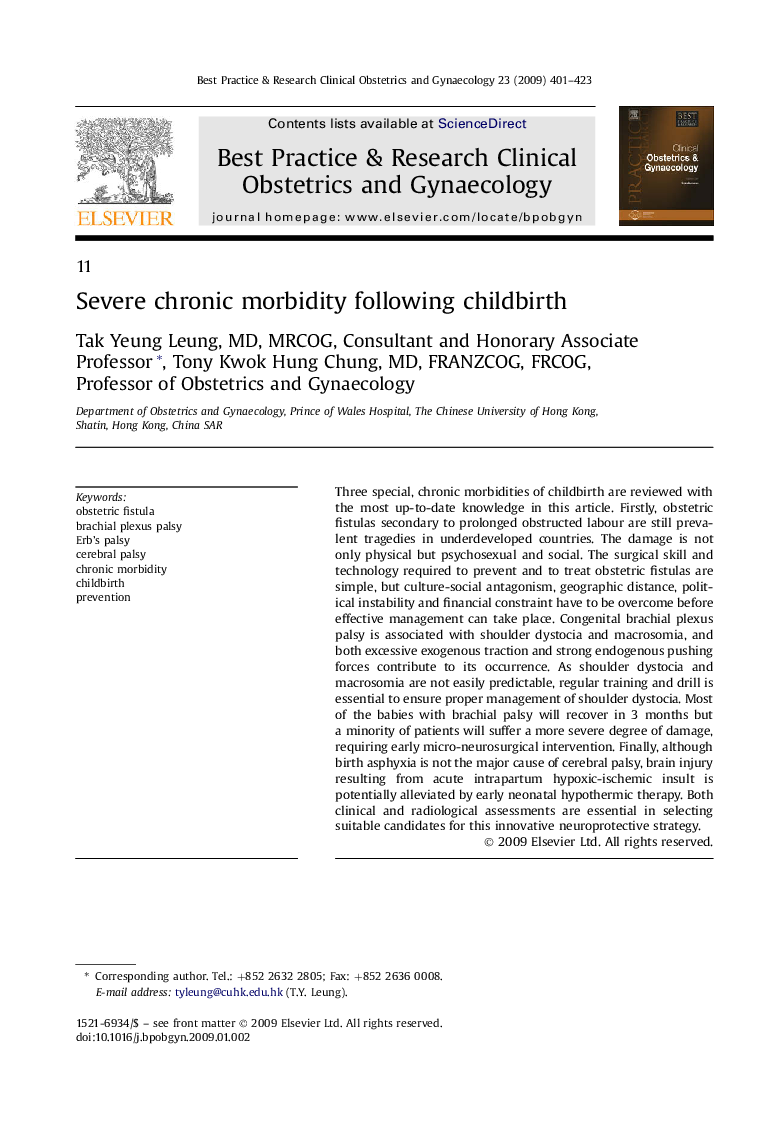| Article ID | Journal | Published Year | Pages | File Type |
|---|---|---|---|---|
| 3907822 | Best Practice & Research Clinical Obstetrics & Gynaecology | 2009 | 23 Pages |
Three special, chronic morbidities of childbirth are reviewed with the most up-to-date knowledge in this article. Firstly, obstetric fistulas secondary to prolonged obstructed labour are still prevalent tragedies in underdeveloped countries. The damage is not only physical but psychosexual and social. The surgical skill and technology required to prevent and to treat obstetric fistulas are simple, but culture-social antagonism, geographic distance, political instability and financial constraint have to be overcome before effective management can take place. Congenital brachial plexus palsy is associated with shoulder dystocia and macrosomia, and both excessive exogenous traction and strong endogenous pushing forces contribute to its occurrence. As shoulder dystocia and macrosomia are not easily predictable, regular training and drill is essential to ensure proper management of shoulder dystocia. Most of the babies with brachial palsy will recover in 3 months but a minority of patients will suffer a more severe degree of damage, requiring early micro-neurosurgical intervention. Finally, although birth asphyxia is not the major cause of cerebral palsy, brain injury resulting from acute intrapartum hypoxic-ischemic insult is potentially alleviated by early neonatal hypothermic therapy. Both clinical and radiological assessments are essential in selecting suitable candidates for this innovative neuroprotective strategy.
